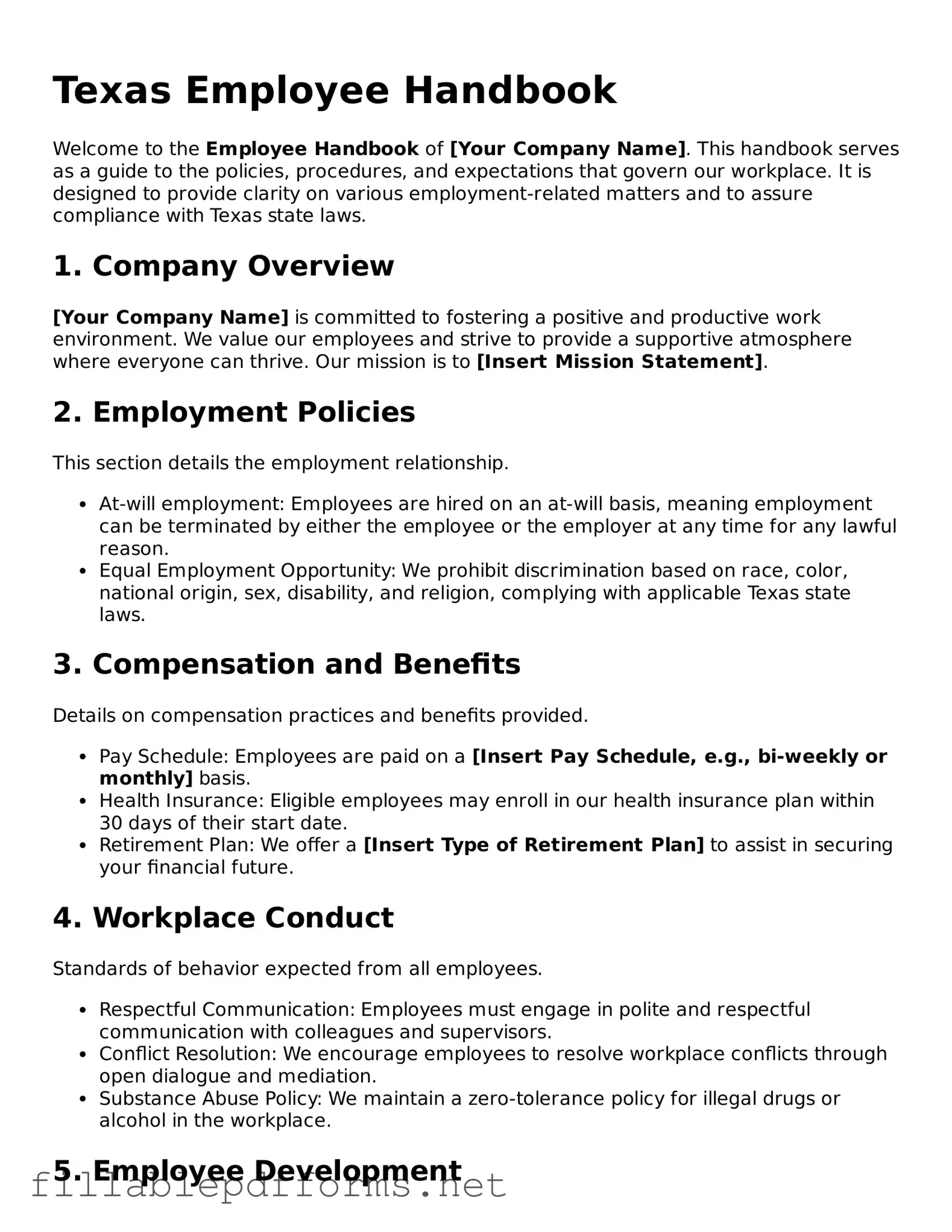Attorney-Verified Employee Handbook Form for Texas State
The Texas Employee Handbook form serves as a vital document that outlines the policies, procedures, and expectations for employees within a workplace. This form not only helps to ensure compliance with state laws but also fosters a positive work environment by clearly communicating the rights and responsibilities of both employees and employers. By providing essential information, the handbook supports a culture of transparency and accountability.
Launch Editor Here
